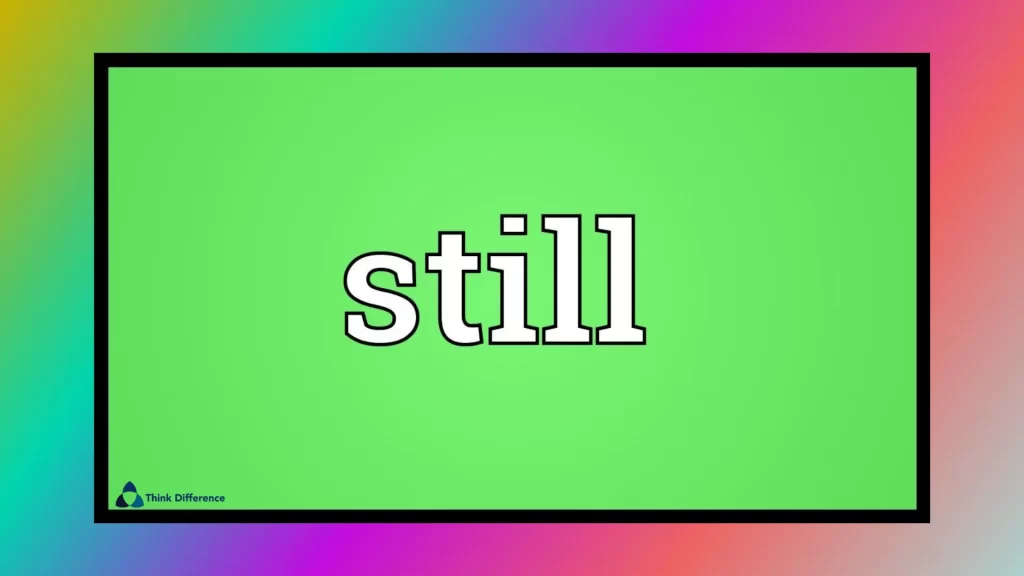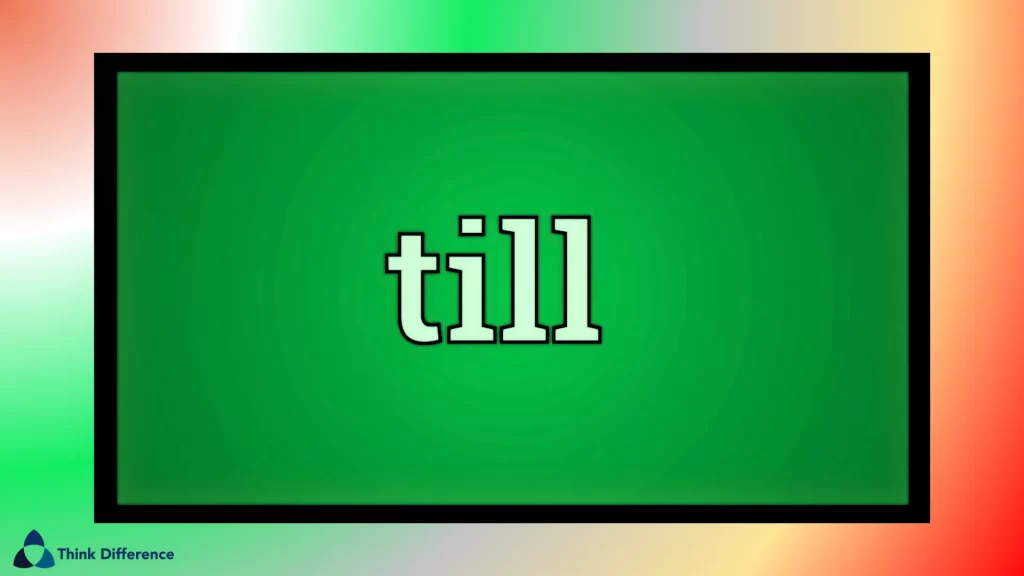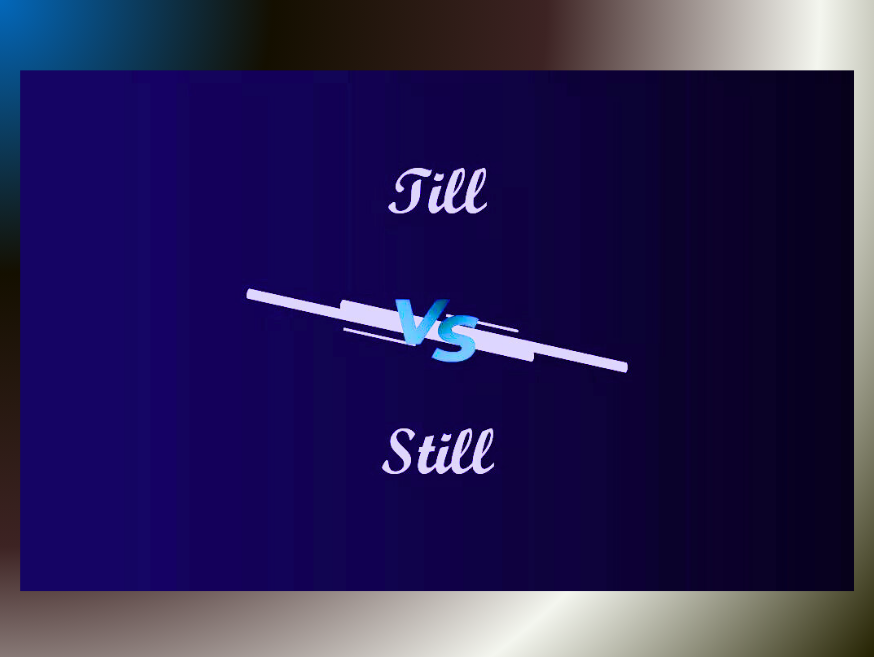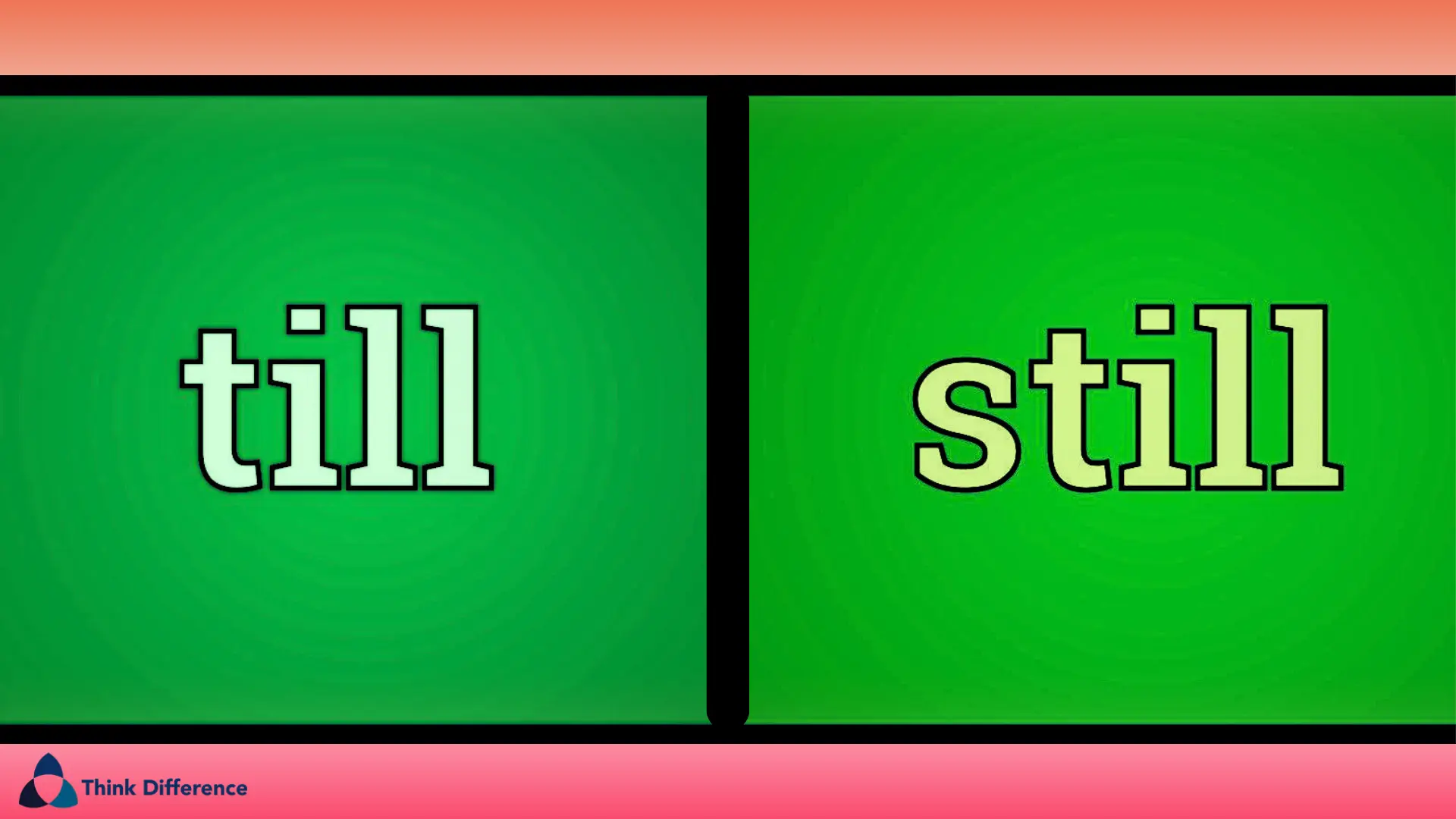Still and Till two words are often encountered when using English. Their usage and meaning may sometimes cause confusion. Here we’ll look at both words to help guide writing when using them correctly – let’s dive right in!
English language swathed in vocabulary, there are numerous words with similar but distinct meanings – often confused and used interchangeably. Two such examples are still and till, both related to continuity and time but each having distinct interpretations that will increase proficiency while decreasing frequent mistakes. Understanding their distinctions will assist with improving your proficiency as an English speaker as well as decreasing frequent miscommunication errors.
In this article, we’ll delve into the meaning and uses of both “still” and “till,” by outlining their distinct features and providing examples of when each term should be utilized appropriately in writing. By the end, you should have an in-depth knowledge of when you should utilize each of them for optimal writing precision and accuracy – let’s do away with any confusion between the terms! Let’s start unraveling their mysteries!
What is Still?

Still, as an adjective, refers to the absence of movement, sound or activity. It describes something that is not in motion or remains quiet and undisturbed. Here are some key characteristics and uses of “still”:
- Lack of motion: Still implies a state of rest or immobility. It describes something that is not moving or not causing movement.
Example: The still water in the pond reflected the surrounding trees perfectly. - Tranquility and quietness: Still can also convey a sense of calmness and silence, suggesting a lack of disturbance or noise.
Example: The house was still, with no sound except for the ticking of the clock. - Unchanged or unaltered: Still can indicate that something remains the same over a period of time, without experiencing significant change.
Example: Her passion for art is still strong after all these years. - Continuation or persistence: Still can indicate that a particular state or condition continues or persists without interruption.
Example: He is still working on his novel, determined to finish it. - Contrast or surprise: Still can be used to introduce a surprising or unexpected contrast to a previous statement or situation.
Example: The car broke down but still, they managed to reach their destination on time.
It is important to note that “still” can also function as an adverb and a verb, with slightly different meanings and uses in those contexts.
What is Till?

Till, as both a preposition and a verb, has distinct meanings and uses. Here are the main characteristics and uses of “till”:
As a preposition:
- Up to the time or point of: Till is used to indicate the time or point up to which something happens or continues.
Example: They played basketball till midnight. - To the extent or degree of: Till can also denote the extent or degree to which something reaches or covers.
Example: The road stretches till the edge of the forest.
As a verb:
- Prepare land for crops: Till is used to describe the process of preparing land for cultivation by plowing, harrowing and leveling it.
Example: The farmers tilled the soil before planting the seeds. - Work or cultivate land: Till can also mean to work or cultivate land for the purpose of producing crops.
Example: They tilled the fields and grew a variety of vegetables. - Engage or occupy: In obsolete usage, till can mean to cause someone to be busy or occupied with a task.
Example: The challenging project tilled his mind, leaving him with little time for leisure.
Both terms interchangeably, with “till” often being seen as more informal terminology than its counterpart “until”. In formal writing, “until” is generally preferred. Additionally, “till” can sometimes be considered less precise or less common in certain contexts, so it is essential to consider the appropriate usage based on the desired level of formality.
Importance of understanding the difference between still and till

Understanding the difference between still and till is important for several reasons:
- Clarity in communication: Using the correct word ensures that your intended meaning is accurately conveyed to others. Choosing between still and till appropriately prevents confusion and misinterpretation in written and spoken language.
- Grammatical accuracy: Still and till belong to different parts of speech and have distinct grammatical functions. Knowing how to use them correctly enhances your overall language proficiency and demonstrates a command of grammar rules.
- Contextual precision: Still and till have nuanced meanings and are used in specific contexts. Understanding their differences allows you to choose the right word that aligns with the intended message and fits the context appropriately.
- Writing and reading comprehension: Being able to differentiate between still and till enhances your reading comprehension skills, as you can accurately interpret texts that utilize these words. It improves your writing skills by enabling you to select the most suitable word for conveying your thoughts effectively.
- Avoiding common errors: Confusion often arises between still, till and similar words like until. By understanding the distinctions, you can avoid common errors such as using still instead of till or vice versa or mistakenly using until when till is the appropriate choice.
- Enhancing language fluency: Developing a strong grasp of vocabulary and usage contributes to overall language fluency. By mastering the differences between still and till, you expand your linguistic repertoire and become a more confident and competent communicator.
- Appreciating language nuances: Language is rich with nuances and recognizing the distinctions between words like still and till allows you to appreciate the intricacies and versatility of the English language. It deepens your understanding of vocabulary and language usage, fostering a greater appreciation for linguistic diversity.
Understanding the difference between still and till is crucial for effective communication, grammatical accuracy, contextual precision and overall language proficiency. It enables you to convey your intended meaning clearly, avoid common errors, and appreciate the subtleties of language usage.
Differences Between “Still” and “Till”
Here are the differences between “still” and “till”:
Grammatical Function:
- “Still” can function as either an adjective, adverb or verb.
- “Till” serves both prepositional and verb functions.
Meaning and Usage:
Still:
- Adjectival term, silence refers to an absence of sound, motion or activity. It suggests a state of calmness or tranquility.
Example: The still lake reflected the mountains in its serene surface. - As an adverb, it indicates that a particular situation continues up to the present time.
Example: She still has not received an answer to her message. - As a verb, it means to make or become still, quiet or calm.
Example: He tried to still his racing heart before the big presentation.
Till:
- As a preposition, it indicates the time or point up to which something continues or lasts.
Example: They worked till midnight to finish the project. - Verb: Prepare land or start cultivating
Example: The farmer tilled the soil before planting the crops.
It’s essential to keep in mind that “till” is frequently used interchangeably with “until,” though “till” tends to be considered more casual. Additionally, “till” can sometimes be considered less precise or less common in certain contexts.
Understanding these differences helps ensure accurate usage and clear communication when choosing between “still” and “till” in different sentences and contexts.
Common Mistakes and Confusions
1. Confusing “still” with “till”:
- Mistakenly using “still” when “till” is the appropriate word to indicate the time or point up to which something continues or lasts.
- Example: “I will wait still you finish” (Incorrect) – “I will wait till you finish” (Correct).
2. Using “still” instead of “yet”:
- An incorrect use of “still” when “yet” would better convey “up until now” or a specific point in time.”
- Example: “I still haven’t received my package” is incorrect versus, “I still haven’t received it yet”.
3. Incorrect placement of “still” in a sentence:
- Misplacing “still” within a sentence, leading to confusion or altering the intended meaning.
- Example: “She still always arrives on time” is not accurate – either “she always arrives on time still” depending on your intent.
4. Overusing “still” as a filler word:
- Using “still” excessively in sentences without adding any meaningful information, resulting in repetitive or unclear expression.
- Example: “He was still, still thinking about his decision” (Better: “He was motionless, pondering his decision”).
5. Confusing “till” with “until”:
- Incorrectly substituting “till” with “until” or vice versa, especially in formal or academic writing where “until” is preferred.
- Example: “She waited till the rain stopped” (Informal). “She waited till the rain stopped” (Formal writing).
6. Using “till” as a contraction of “until”:
- Incorrectly using “till” as a contraction of “until” in formal writing.
- Example: “I’ll wait till your arrival” (informal).
It’s important to be mindful of these common mistakes and confusions to ensure accurate and effective usage of “still” and “till” in various contexts.
Additional Usage of “Still”
Here are some additional usage examples of “still”:
1. To express an ongoing condition or state:
- She is still upset about what happened yesterday.
- He still loves playing video games despite his busy schedule.
2. To convey a lack of change or progress:
- The project is still in the early stages.
- The situation remains the same, We’re still waiting for an update.
3. To indicate a continuation of a previous action or state:
- I still remember our first meeting.
- They are still working on improving their product.
4. To introduce a contrasting or surprising statement:
- She failed the test, but she still managed to pass the course.
- Even though they faced horrible conditions, they still enjoyed themselves immensely.
5. To express time-related persistence or repetition:
- He still visits his grandparents every weekend.
- The tradition is still observed after centuries.
6. To emphasize an extreme or high degree:
- The scenery was still more beautiful than I had imagined.
- The applause for her performance was still louder than before.
Make note that “still” can be used as an adjective, adverb or verb depending on its context and intended use. Its usage also depends on meaning intended and emphasis placed upon this term.
Additional Usage of “Till”
Here are some additional usage examples of “till”:
1. To express a specific time or duration:
- The store is open from 9 a.m. till 6 p.m.
- She waited patiently till midnight for the announcement.
2. To indicate the extent or limit of something:
- He walked till the end of the road.
- The path is paved till the entrance of the park.
3. To convey purpose or intention:
- They saved money till they could afford a new car.
- He studied diligently till he mastered the subject.
4. In informal contexts, “till” can be used as a contraction of “until”:
- I’ll wait till you finish your work.
- Let’s stay till the party ends.
5. As a verb, to describe the act of cultivating or preparing land for farming:
- The farmers tilled the soil before planting the crops.
- He spends his days tilling the fields.
“Till” should be understood to be less formal than its formal equivalent “until” and is frequently utilized in informal or spoken writing. For formal documents it would likely be preferable to employ the use of “until”.
Tips for Correct Usage
Here are some tips for correct usage of “still” and “till”:
- Understand the meanings: Familiarize yourself with the definitions and nuances of both words to use them accurately in different contexts.
- Pay attention to grammatical function: Determine whether you need an adjective, adverb, preposition or verb in the sentence. This helps you choose between “still” and “till” appropriately.
- Consider formality: “Still” is generally more versatile and can be used in both formal and informal contexts. “Till” is considered less formal, and it’s preferable to use “until” in formal writing.
- Use “still” for lack of movement or unchanged state: If you want to convey the absence of motion, calmness or continuity, “still” is the appropriate choice.
Example: The still lake reflected the mountains. - Use “till” to indicate time or extent: When referring to time duration or the limit of something or when discussing land cultivation, use “till.”
Example: Wait here till I return. - Beware of common mistakes: Avoid making common errors such as misusing “still” instead of “till,” not placing “still” within a sentence and conflating “till” with “until.” Double check spelling to ensure clarity and precision in writing.
- Read and observe: Pay attention to how “still” and “till” are used in various contexts in books, articles and conversations. Reading and observing their usage will help you develop a better understanding of their correct application.
- Proofread and edit: After writing, review your sentences to verify that you have used the correct word (still or till) and that it fits the intended meaning. Make any necessary corrections before finalizing your writing.
By keeping these tips in mind and practicing their proper usage, you can effectively incorporate “still” and “till” into your spoken and written communication.
Conclusion
Still and Till are two words that may seem similar, but they have distinct meanings and applications in the English language. “Still” indicates a continuous state or action, while “till” refers to a specific time or event up to a certain point. Understanding the difference between these words will enhance your ability to communicate effectively in various situations.



